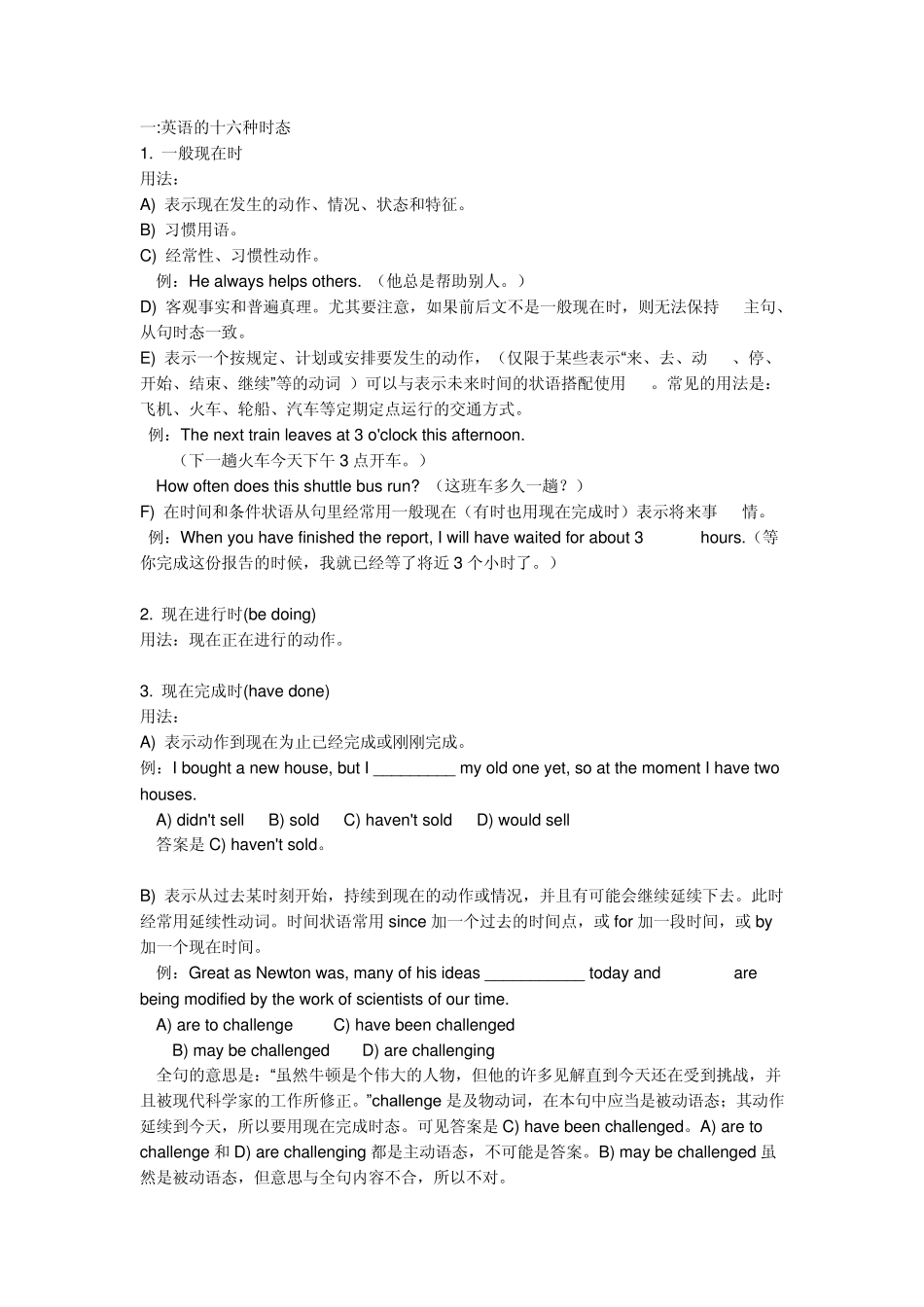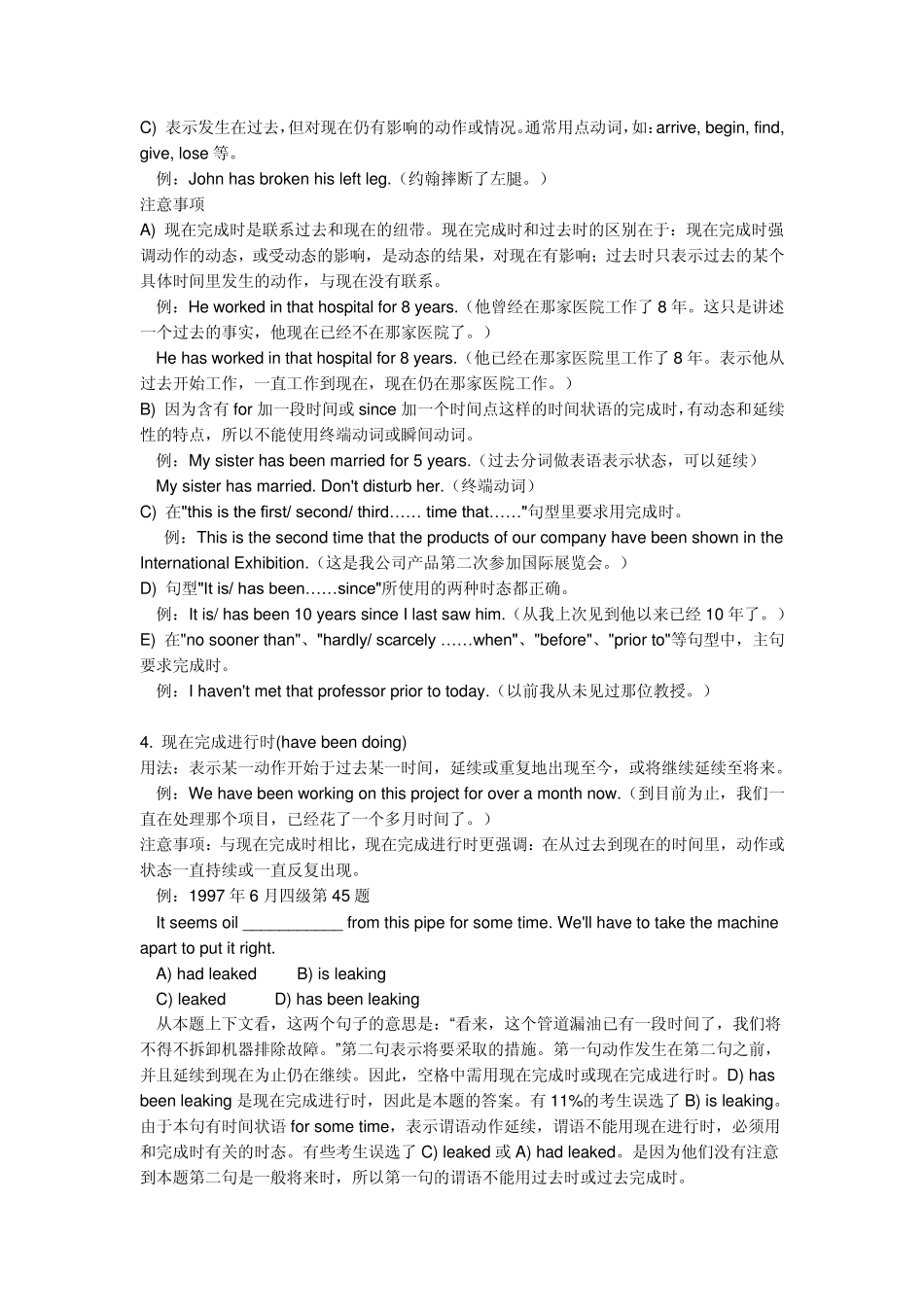一:英语的十六种时态 1. 一般现在时 用法: A) 表示现在发生的动作、情况、状态和特征。 B) 习惯用语。 C) 经常性、习惯性动作。 例:He always helps others. (他总是帮助别人。) D) 客观事实和普遍真理。尤其要注意,如果前后文不是一般现在时,则无法保持 主句、从句时态一致。 E) 表示一个按规定、计划或安排要发生的动作,(仅限于某些表示“来、去、动 、停、开始、结束、继续”等的动词 )可以与表示未来时间的状语搭配使用 。常见的用法是:飞机、火车、轮船、汽车等定期定点运行的交通方式。 例:The next train leaves at 3 o'clock this afternoon. (下一趟火车今天下午 3 点开车。) How often does this shuttle bus run? (这班车多久一趟?) F) 在时间和条件状语从句里经常用一般现在(有时也用现在完成时)表示将来事 情。 例:When you have finished the report, I will have waited for about 3 hours.(等你完成这份报告的时候,我就已经等了将近 3 个小时了。) 2. 现在进行时(be doing) 用法:现在正在进行的动作。 3. 现在完成时(have done) 用法: A) 表示动作到现在为止已经完成或刚刚完成。 例:I bought a new house, but I _________ my old one yet, so at the moment I have two houses. A) didn't sell B) sold C) haven't sold D) would sell 答案是 C) haven't sold。 B) 表示从过去某时刻开始,持续到现在的动作或情况,并且有可能会继续延续下去。此时经常用延续性动词。时间状语常用since 加一个过去的时间点,或 for 加一段时间,或 by加一个现在时间。 例:Great as Newton was, many of his ideas ___________ today and are being modified by the work of scientists of our time. A) are to challenge C) have been challenged B) may be challenged D) are challenging 全句的意思是:“虽然牛顿是个伟大的人物,但他的许多见解直到今天还在受到挑战,并且被现代科学家的工作所修正。”challenge 是及物动词,在本句中应当是被动语态;其动作延续到今天,所以要用现在完成时态。可见答案是 C) have been challenged。A) are to challenge 和 D) are challenging 都是主动语态,不可能是答案。B) may be challenged 虽...


